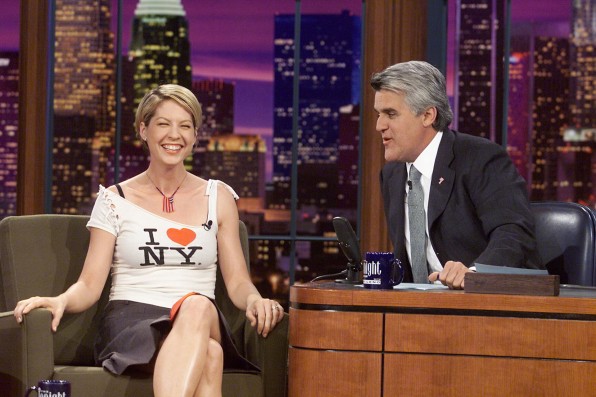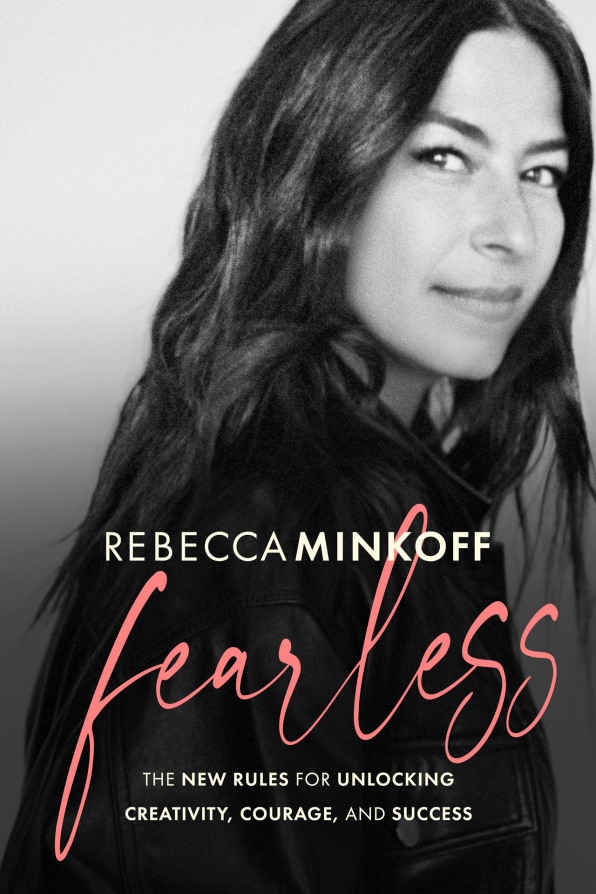Are Ripped T Shirts a Fashion Move
Two decades ago, I designed a shirt—nosotros soon started calling information technology The Shirt—that mixed ideas from my favorite tourist-destination T-shirts to create an ode to my favorite city: New York City. An extra wore information technology on The This night Show, and the next twenty-four hour period people everywhere knew my name. It's the kind of story that, looking in from the outside, makes it seem like it just takes a little bit of luck to become an overnight success.
In actuality, I had been living in New York, in a tiny walk-upward shoebox that was advertised as an apartment, and working long hours for footling more than minimum wage in the fashion industry for two years earlier this moment. In that location was nothing overnight about it.
I had fabricated it to New York and had landed my get-go real job in mode. My tastes were very dissimilar from those of the designer I worked for, but I needed to acquire virtually how to build a make with a potent foundation from both a business and a drove perspective.
Two years in, I had designed a five-piece drove. This little sheathing included a silk blouse with a cummerbund permanently fastened, a denim tuxedo (the pants were low-ascent with a slight boot-cutting flare), a basic T-shirt, and The Shirt. The "look book" itself? Expensive green iridescent paper with metallic binder clips. It had 10 shots in the whole entire thing.
Past day, I worked. By nighttime, I worked likewise. While I didn't have the capital to produce anything outside of my five-piece collection, I did have enough money to make a few versions of The Shirt. The cheapest option was to buy the existing tops and make them my own. My inspiration was that escapist energy of a tourist embankment T-shirt—call up of those acid-washed neon tees available up and downward the Atlantic coast or those island-mode tanks customized with fringe and beads, which I had fallen for during my start trip to the Caribbean area. I wanted to have that free energy and make information technology cool, make it about my new habitation. I had been cutting up and knotting T-shirts since my dance-class days back in middle school, then taking a tee from basic and ho-hum to come across-me-at-the-barre with a trusty pair of scissors was second nature to me.
Whenever I had the take a chance, I would play around with different techniques of cutting, tying, and customizing the T-shirts. I really tried everything: asymmetrical necklines, asymmetrical hemlines, asymmetrical sleeves; cut sleeves off, tying them back on, cutting them shorter. I couldn't afford to let any shirt go to waste product, then if 1 came out a piddling odd, I'd keep playing effectually with it until it worked. (Some would get cut and reshaped, getting smaller and smaller, and then many times that I was worried I'd take to start a kids' line.) I wore one myself and gave them away to a few friends.
One of the people I gave a T-shirt to was my so friend, at present sis-in-law, Stephanie. She's just one of those people who can vesture annihilation and wait astonishing. One dark in Los Angeles, Steph threw on the shirt with a pair of jeans and a blazer and went to dinner with her friend Jenna Elfman. Jenna asked if Steph could get her a shirt. Of course Dharma of the early aughts hitting sitcom Dharma & Greg could have a shirt! I was such a big fan that I sent it to her the very next day. It was September 9, 2001.

Information technology was around this time that I was introduced to a publicist who had just started out. A few weeks after meeting, he asked if I wanted to participate in a small grouping bear witness of emerging designers that he was curating. The respond was a big, resounding yes. At the time it felt like a big deal. The evidence was on September 10, 2001.
Early the next morning time on September 11, still on a high from the show the night before, I went to a fabric seminar to acquire about cotton wool. Information technology seemed like just another twenty-four hour period. Before the presenter fifty-fifty took the phase, the organizer ran in, and so upset, and announced that at that place had been an attack on the Earth Merchandise Center.
The nine/11 tragedy rocked the city, the state, and the globe.
But New York and New Yorkers are nothing if not resilient. After a few weeks, despite the devastation and heartbreak, people were continuing to come together and starting to find new rhythms in that new normal. My fashion bear witness felt like it had happened in another lifetime.
In early on October, my telephone rang. Information technology was Jenna Elfman's banana calling to permit me know that Jenna had filmed a segment for The Tonight Show with Jay Leno. She had worn the I Middle New York shirt that I had customized for her on the show. Information technology was going to air that night. It seemed surreal. I couldn't let myself believe it until I saw information technology with my own eyes: a white T-shirt with the iconic graphic that I had slashed, snipped, shredded, fringed, knotted, tied, and sewn back together into the ultimate tribute to the city that the whole globe loved.
The Shirt was truly an homage to the metropolis that I had idealized and dreamed virtually from afar. Information technology had welcomed me, my dreams, and my crappy one-time suitcases with its inspiration, palpable energy, and endless possibilities. The 9/11 tragedy broke my heart, but I was grateful I had created something to gloat my new hometown, fifty-fifty if information technology was as trivial as a customized tee that banded people together and lifted their spirits.
The morning after Jenna wore The Shirt on Idiot box, I woke up to a ringing phone and an inbox full of messages. For the first time in my life, people wanted to purchase something that I had made. I had to pinch myself more than one time. A day later, all of the popular gossip weeklies ran shots of Jenna from the show, and the need grew tenfold. I needed some I Center New York shirts, and I had to showtime customizing them fast.

I rode all over the urban center—to Times Square, through Chinatown—to every tourist kiosk, buying as many T-shirts every bit possible: v for $80 here, two for $30 there. Xx for $100 at one memorable finish. I honestly believe that I accept bought more I Centre New York T-shirts than anyone else in the entire globe. I scanned, saved, and printed every mention that I got in any magazine. I had made a list of the boutiques that I thought were incredibly cool, and and then I printed out my line sheets and press kit and manus-delivered them to each shop. A few shops placed orders or took a few shirts on assignment. Every time I got a new lodge, it felt like another piece of the puzzle falling into place.
In order to make sure that these pieces didn't only sit down on the racks and that people really bought them, I had postcards printed with a flick of The Shirt and the addresses of where it could exist found. I was 1 of those people who would stand in Union Square for hours passing out postcards to higher kids and tourists. Most people blew past me; some people asked me if I knew the designer. Information technology didn't feel good to see my name trampled on the sidewalk at the end of the 24-hour interval—I ain't gonna lie—just all of that promotion worked, because my stuff sold.
It wasn't until four years after that I designed my first purse, the Morning Later Bag, a.k.a. the MAB, and my business actually took off. But The Shirt was the start of Rebecca Minkoff as y'all know information technology today.
From Fearless: The New Rules for Unlocking Creativity, Backbone, and Success past Rebecca Minkoff, published by HarperCollins Leadership.
0 Response to "Are Ripped T Shirts a Fashion Move"
Post a Comment